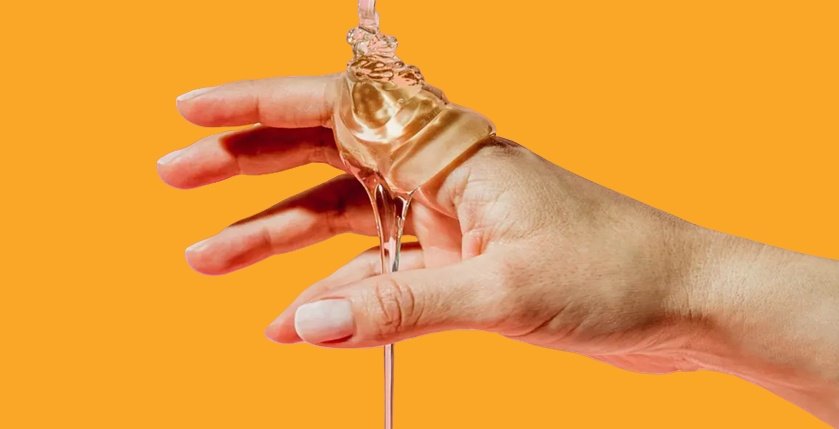The Sweet Science of Wound Care: How Manuka and Medihoney Are Changing the Game
Nature’s Little Miracle Worker
Imagine being able to treat wounds, burns, and scrapes with something that’s not only natural, but has been used for centuries. Honey – yes, the same honey that sweetens your tea – is making a huge comeback in modern medicine! But not just any honey; we’re talking about Manuka honey and its medical-grade cousin, Medihoney. These golden wonders aren’t just for your breakfast toast – they’re taking wound care to the next level. In this article, we’ll show you why these honey-powered treatments are revolutionizing wound healing.
What Makes Manuka Honey So Special?

Manuka honey is no ordinary honey. It’s produced by bees that feast on the nectar of the Manuka tree (Leptospermum scoparium), native to New Zealand and Australia. And unlike the run-of-the-mill honey in your pantry, Manuka honey packs some serious punch. It’s rich in methylglyoxal (MGO), hydrogen peroxide, and phenolic acids, all of which give it powerful antibacterial, antioxidant, and anti-inflammatory properties.
But here’s the kicker: not all Manuka honey is created equal. Medihoney, a medical-grade version, goes through rigorous testing and sterilization to ensure it’s free from contaminants and safe for medical use. So, when it comes to treating wounds, burns, and even chronic skin conditions, this is the real deal.
How Does Honey Help Wounds Heal?

Now, let’s get into the “sweet” science behind honey’s healing magic. Honey’s healing powers come from a few simple but powerful mechanisms:
Antibacterial Action: Honey creates a barrier that prevents bacteria from invading the wound. Its low pH (around 3.2–4.5) and high sugar content dehydrate bacteria, making it a tough place for them to survive. Bye-bye, bacteria!
Anti-Inflammatory Effects: It reduces swelling and pain by cutting down on inflammatory molecules in your body. Who doesn’t want less swelling and pain?
Wound Cleansing: Honey’s thick, viscous texture helps clean the wound by removing dead tissue and debris. It’s like giving your wound a nice little scrub, but much gentler.
Moist Wound Healing: Unlike dry dressings that can cause scarring, honey keeps the wound moist, which speeds up healing and reduces scarring. It’s like giving your skin a spa day!
Clinical Studies Back It Up
It’s not just grandma’s old remedies—science is on board (PMC Study of Manuka honey)too. Clinical studies show that Manuka honey and Medihoney are effective for:
Acute wounds (cuts, burns, scrapes)
Chronic wounds (diabetic ulcers, pressure sores)
Infected wounds (where antibiotics might not do the trick)
For instance, a 2016 study published in the Journal of Wound Care found that Manuka honey dressings cut healing time for chronic wounds by up to 50% compared to traditional treatments. Another study in The British Journal of Surgery reported that honey dressings significantly reduced pain and swelling in burn patients. Not bad for something that’s been around for thousands of years!
Medihoney: The Medical-Grade Wonder
So, what’s Medihoney? It’s the supercharged version of Manuka honey. This medical-grade honey is sterilized, FDA-approved, and used in hospitals around the world. Here’s how it helps:
Antibacterial Wound Gel: A thick gel applied directly to wounds to fight infection and speed up healing.
Wound Dressings: Pre-soaked dressings that stay in place, offering long-lasting protection.
Antibacterial Barrier Cream: Ideal for preventing infection in minor cuts and scrapes.
How to Use Medihoney (It’s Easy, Promise!)
Clean the wound: Gently wash with mild soap and water.
Apply Medihoney: Spread a thin layer of gel or apply a dressing directly to the wound.
Cover with a bandage: This keeps the honey in place and protects the wound.
Change daily: Reapply as needed, especially if the dressing becomes soiled.
Real-Life Success Stories
Still not convinced? Let’s look at a couple of real-life examples of how Medihoney has worked wonders.
Case Study 1: Burn Victim A 34-year-old chef suffered second-degree burns on her hand after touching a hot pan. After applying Medihoney gel twice a day, the pain was gone within 24 hours, and the burn healed completely in just 10 days with minimal scarring. Talk about fast recovery!
Case Study 2: Diabetic Foot Ulcer A 65-year-old diabetic man had a non-healing ulcer on his foot for six months. After switching to Medihoney dressings, the ulcer closed up in four weeks, and he was able to avoid amputation. Medihoney saved his foot—and possibly his life.
Precautions and Side Effects
As sweet as honey sounds, there are a few things you need to keep in mind:
Allergies: If you’re allergic to bees or pollen, don’t use honey on your wounds.
Pain: Some users report a temporary stinging sensation when applying honey to open wounds. But don’t worry, it usually goes away pretty quickly.
Diabetes: Honey can raise blood sugar levels, so if you’re diabetic, monitor your blood sugar closely.
Avoid on Deep Burns: Don’t apply honey to third-degree burns or deep wounds unless directed by a healthcare professional.
Learn More: https://medihoneyshop.com
When to See a Doctor
While honey is a great first-aid option, some wounds require medical attention. You should see a doctor if:
The wound is deep, bleeding heavily, or shows signs of infection (redness, swelling, pus).
You have a compromised immune system (e.g., diabetes, HIV).
The wound isn’t improving after 1–2 weeks of honey treatment.
Conclusion: The Future of Wound Care Is Sweet
From ancient remedy to modern miracle, honey—especially Manuka honey and its Medihoney counterpart—has proven to be a natural, effective, and affordable solution for wound care. Whether you’re dealing with a minor cut, a burn, or a chronic wound, honey’s got your back. The best part? It’s been around for thousands of years, and it’s here to stay.
Give Medihoney a try – your skin (and your wallet) will thank you!